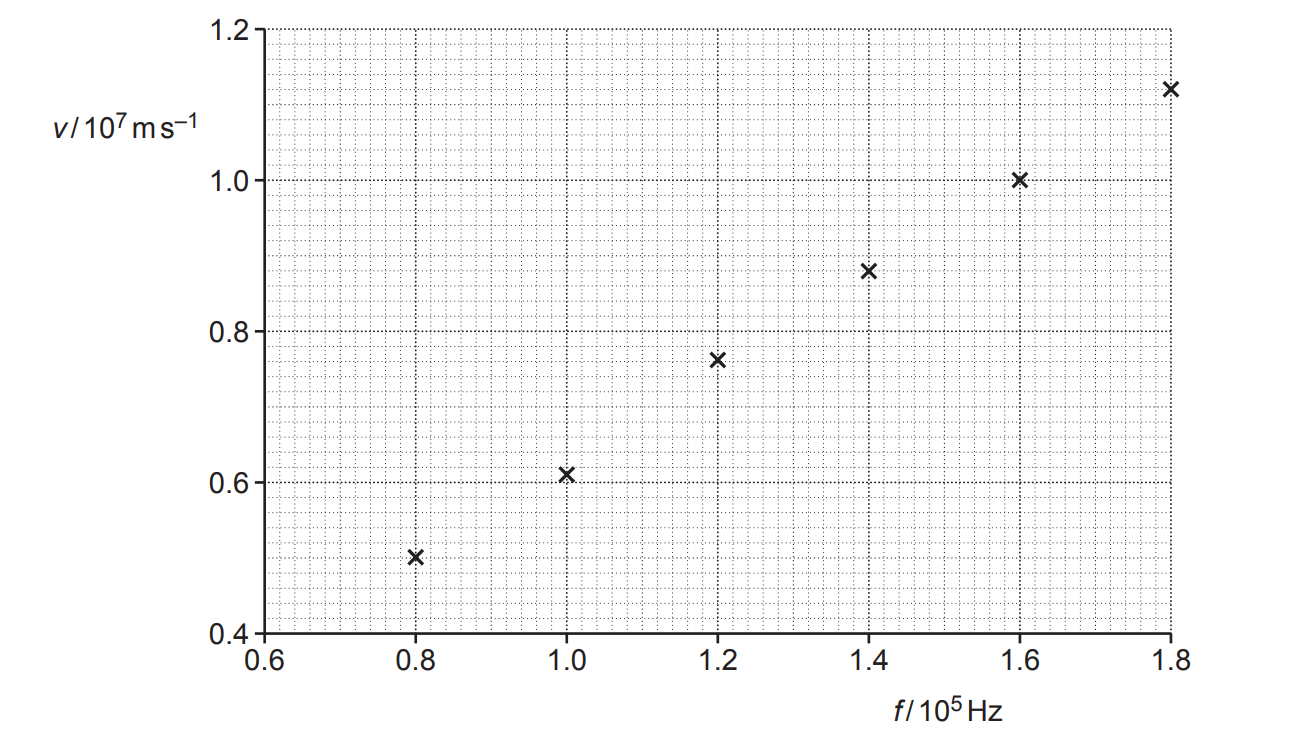A particle-accelerator uses a ring of electromagnets to keep protons moving continuously in a circle. The speed v of the protons depends on the frequency f of rotation of the protons in the circular orbit.
Fig. 22 shows data points plotted on a v against f grid.

Fig. 22
i) Show that the gradient of the graph of v against f is equal to 2πr, where r is the radius of the circular path of the protons.
[2]
ii) Show that r is about 10 m by determining the gradient of the line of best fit through the data points in Fig. 22.
[3]
iii) The maximum speed of the protons from this accelerator is 2.0 × 107 m s–1.
Calculate the maximum centripetal force F acting on a proton at this speed.
• mass of proton = 1.7 × 10–27 kg.
F = ...................................................... N [3]
A new particle-accelerator is now built for moving the protons in a circle of a radius 20 m.
The ring of electromagnets for this new accelerator provides the same maximum centripetal force as the accelerator in (a).
Calculate the maximum speed of the protons in this new accelerator.
maximum speed = ................................................ m s–1 [2]
Did this page help you?







